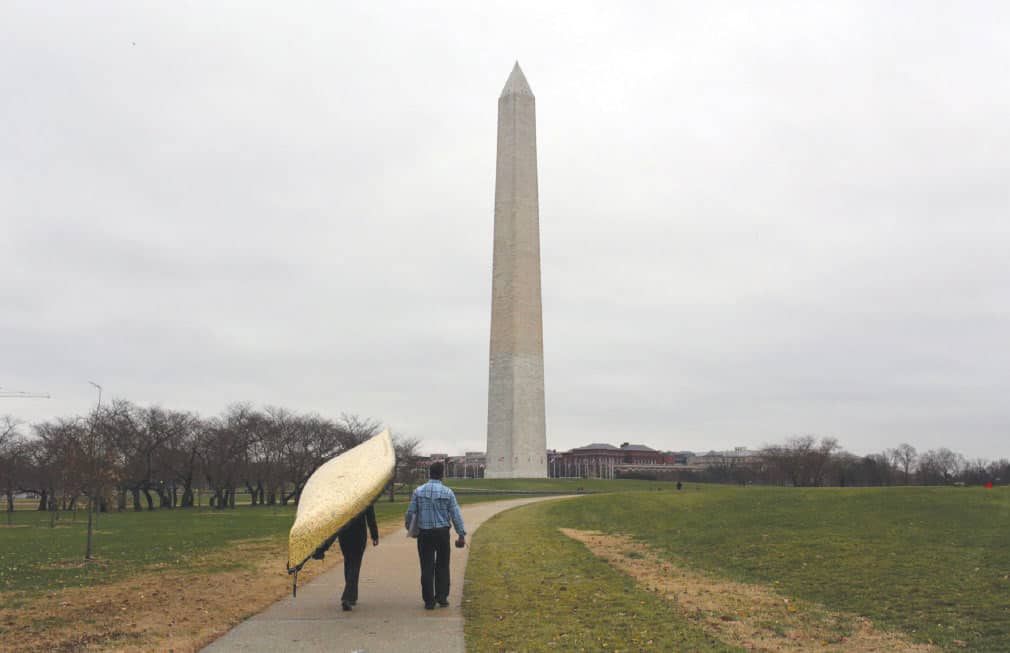
By Greg Seitz
A big storm hit the East Coast the day before Thanksgiving. An old-fashioned Nor’easter. Wet and windy, it forced Dave and Amy Freeman to abandon Chesapeake Bay, load their canoe on portage wheels, and pull it along the shoulder of roads to keep making progress.
Nineteen hundred miles or so behind them, another hundred to go, Dave sounded tired but confident over the phone. They would make it to Washington, D.C. by December 2—in time for scheduled welcome events—if they kept moving. They felt good about what the trip had accomplished: They had reached more people than they had hoped as they canoed and sailed from Ely to the capital. They knew thousands of people around the country cared about the Boundary Waters and would not let anything happen to harm it.
“Like Edward Abbey said, ‘The idea of wilderness needs no defense, it only needs more defenders,’” Dave said.
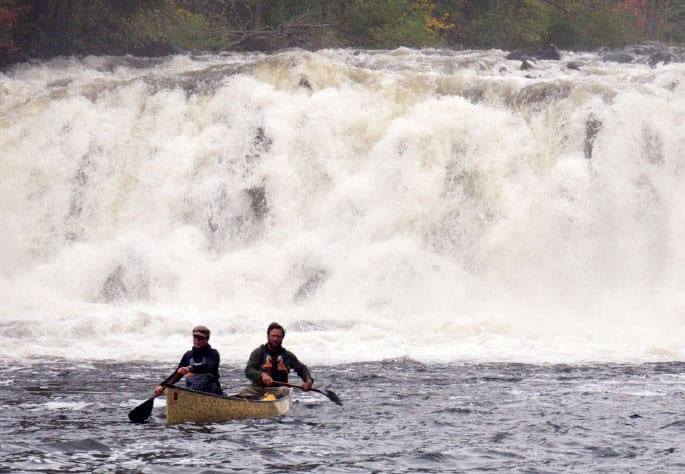
The canoeing couple launched from the South Kawishiwi River on August 24, and paddled 160 miles through the Boundary Waters along the Border Route to the Grand Portage. There, they strapped their canoe on their sailboat and set off for Duluth, and then across Lake Superior and to Lake Huron. In Georgian Bay, they anchored the sailboat and set off by paddle again, winding their way through Canada and to Lake Champlain in Vermont. Their route took them down the Hudson River and right through New York City, down the Eastern Seaboard to Chesapeake Bay, and finally to the Potomac River and Washington, D.C.
This epic expedition was inspired by what the Freemans see as an existential threat to a national treasure: mining. “The Boundary Waters is our nation’s most popular wilderness area, it receives a quarter million visitors per year. Every year I guide people in the Boundary Waters from Texas and California and all across the country. We need to make sure people all across the country understand how special the Boundary Waters is and understand the threats it faces.”
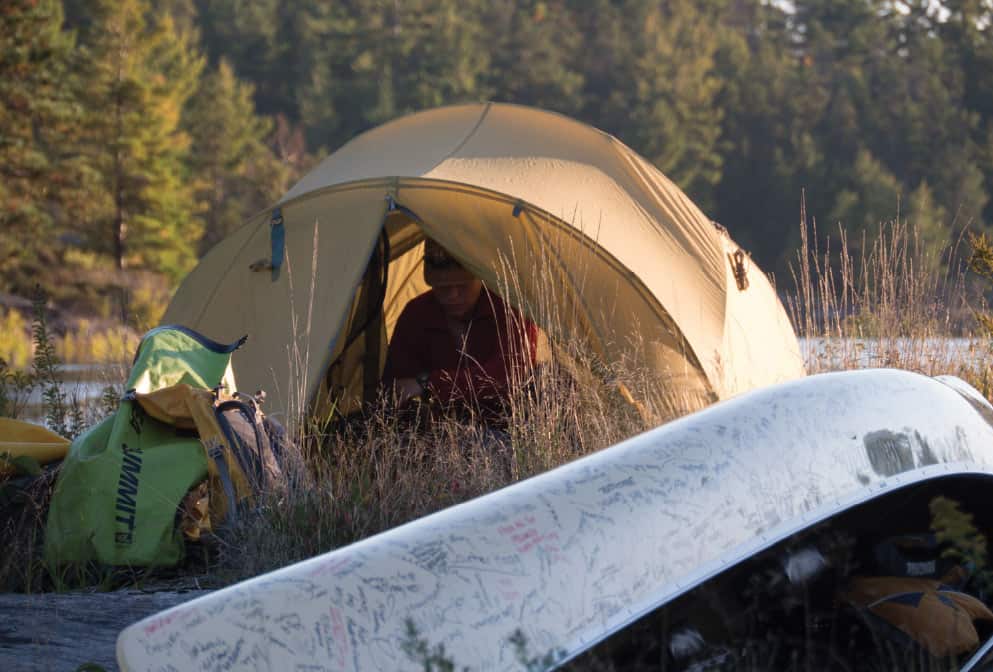
The Freemans make their living with adventure, and got their first tastes of it in the BWCAW. They met while working in Ely, and continue to make the town their base camp while guiding canoeing and dogsledding trips in between bigger expeditions. Their recent three-year-long North American Odyssey took them 11,000 miles across the continent from Seattle to Alaska to the Florida Keys by kayak, foot, canoe, dogsled, and sheer grit. Earlier this summer, Dave joined legendary Arctic explorer, Ely resident, and dogsled guide Paul Schurke on a descent of the Rio Roosevelt in Brazil—better known as the River of the Doubt, subject of an epic 1914 exploration by Teddy Roosevelt and a bestselling book of the same name.
Through their nonprofit organization Wilderness Classroom, the Freemans bring students along on their journeys with learning opportunities emphasizing science, technology, engineering and math. The couple was named National Geographic’s 2014 Adventurers of the Year.
Paddle to D.C. was different, though. It would be a lot less wild, and it was more personal. They had gone on trail for three years and when they got back to Ely, discovered the wilderness where they first got bit by the adventure bug was in peril. Stepping into Sustainable Ely’s action center on Sheridan Street, they learned about the proposals to mine copper, nickel and other metals near the Boundary Waters, and the potential for pollution that comes with such mines.
“If you look at their track record, you can’t find an example of a sulfide ore mine that hasn’t caused significant pollution,” Dave says. “Just this summer, there was a mine in a sulfide ore body called Mount Polley in British Columbia, which was being touted as a poster child mine, and they had a huge retaining wall break that sent hundreds of millions of gallons of water and sediment rushing down a tributary into the Fraser River.”
Inside the Sustainable Ely building was a Wenonah Minnesota III canoe covered in hundreds of signatures, a fitting petition calling for preservation of the canoe country. “They were going to drive it out to DC, and we said ‘a canoe is meant to be paddled,” Dave said, and they started planning a trip, ultimately connecting with a coalition of groups called Save the Boundary Waters, comprised of groups large and small, from The Wilderness Society to Sustainable Ely. The coalition helped the Freemans organize the trip and get the word out.
The trip would celebrate the fiftieth anniversary of the Wilderness Act, and serve as an opportunity to educate people across the country about the threat mining poses to the clean waters of northern Minnesota. “To be putting that right on the edge of the Boundary Waters, this water rich environment, and looking at plans that would require continuous water treatment for hundreds of years after mining would close, it makes me very worried about the impacts mining could have on the Boundary Waters,” Dave said.
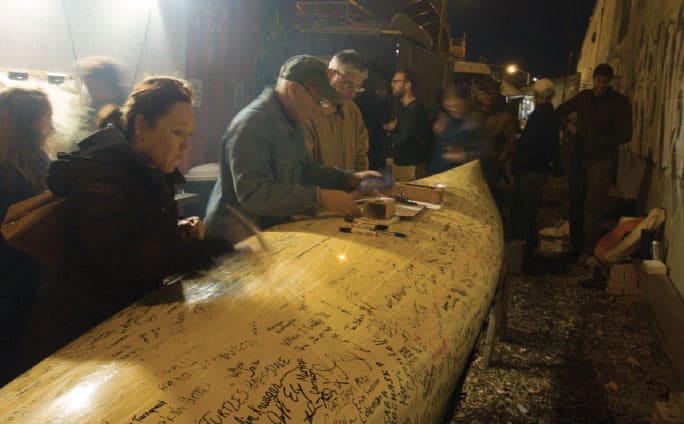
Along their winding route east, the Freemans participated in about 35 events. They spoke about their trip, the Boundary Waters, the mining threat, gathered more signatures on the canoe—dubbed “Sig,” after Sigurd Olson and for the growing number of signatures adorning its hull—and inspired a couple thousand people to explore and defend wilderness. Inspiration was a two-way street, and the Freemans were encouraged by the support they saw for the cause.
“In New York City we had a bunch of paddlers come out with us and paddled down the East River, past Manhattan, big skyscrapers next to us,” Dave said. The experience of paddling through the nation’s biggest city with kindred spirits came as a reprieve from a difficult stretch several days earlier, on the Hudson River. That part of the trip provided what Dave says was the most profound, and dispiriting, experience of the journey.
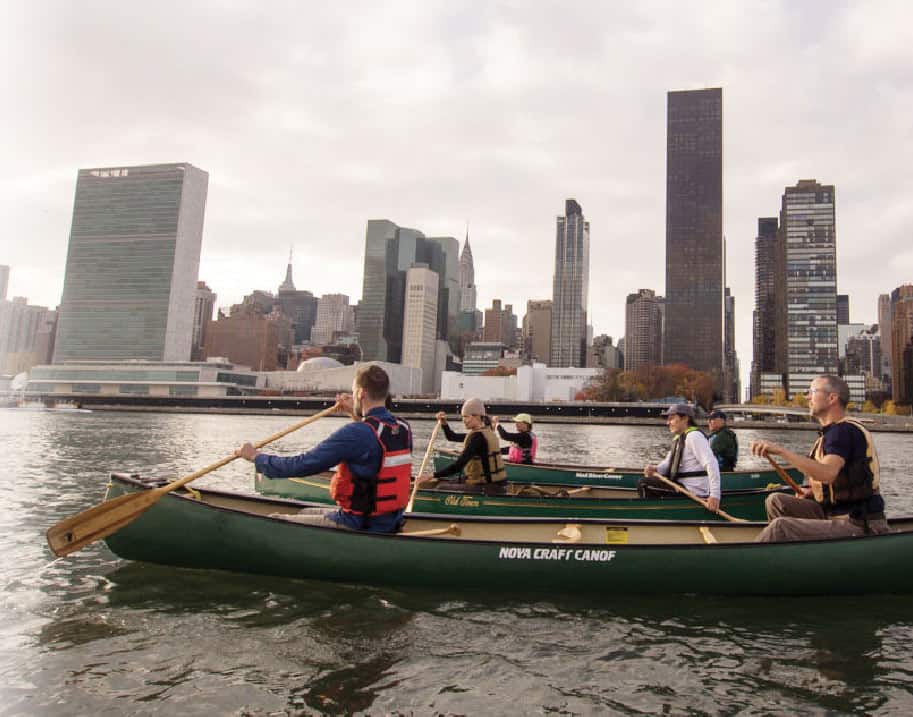
‘It was really cold and rainy and the days were getting really short so we had lots of times when we were getting up before it was light and were setting up camp in the dark. That’s a challenge in itself, but then when you’re paddling through this polluted place, it really wore us down. It was demoralizing to deal with challenging conditions and polluted water and depressing landscape,” Dave says.
The famed river is 315 miles long, and the upper 200 miles of it are a designated Superfund site, which the U.S. Environmental Protection Agency has been leading efforts to clean up since 1977. For 30 years, General Electric and other battery manufacturers dumped up to 1.3 million pounds of toxic Polychlorinated biphenyls, or PCBs, into the river. The river’s sediment, water, and fish are still dangerous to human health.
Dave says he and Amy are determined to not let something like that happen to the northern Minnesota’s lakes and rivers.

“Our overarching goal was to gather more defenders for the Boundary Waters from all over the country and show them why it’s special and needs to be protected,” he said. “I look forward to every chance I get to go into the wilderness and spend that time in nature outside in a quiet place, far from the hustle and bustle of the cities.”
The day after they pulled their canoe along Chesapeake Bay area roads was Thanksgiving. Like many people, the Freemans’ travel plans had been disrupted by the big storm. But while most folks would still sit down to supper with friends and family, Dave said the weather forecast was much better, and they were hoping to make it back on the water—down a local creek back to the bay and then within ten or fifteen miles of Annapolis, MD.
They had set out from Ely to transport a message about the special place they call their home, but its importance had clearly been elevated by their experiences along the way. Dave seemed profoundly affected by paddling down the polluted Hudson River, saying, “You don’t even want to touch the water, but in the Boundary Waters you can dip your cup right in the water and drink out of it. It has given us a real appreciation for the pristine water of wilderness lakes.”
The Freemans made it to D.C. on December 2 as scheduled, paddling the Potomac with members of the Washington Canoe Club on a morning when it was 39 degrees and raining. They spent the next few days touring the capital, talking with even more people about the wilderness and the mining threat, including government officials who are tasked with preserving the wilderness. Before they left Washington, Dave and Amy delivered their canoe to the U.S. Forest Service office, presenting it to agency head Tom Tidwell, where it will hang permanently as a testament to the Boundary Waters and the people who love it.
Read more in Wilderness News Fall-Winter 2014


